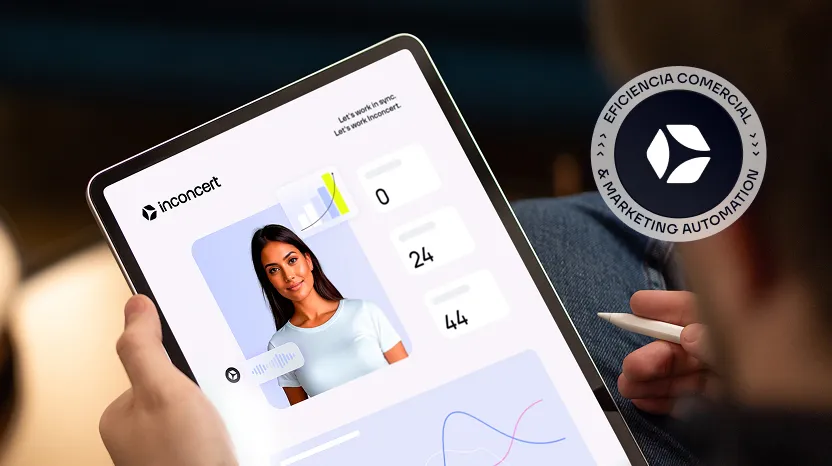In a landscape shaped by shifting consumer habits and growing performance pressure, companies face an increasingly fragmented technological environment—where lack of automation and misalignment between marketing and sales teams remain major barriers to productivity.
These are among the key findings from Inconcert’s 1st Commercial Efficiency and Marketing Automation Observatory, a study conducted by the global customer experience (CX) technology company with more than 200 marketing professionals across multiple industries.
The report identifies the main challenges businesses face and underscores the urgent need for greater operational efficiency in lead management. Notably, 50.7% of respondents said they do not have full visibility into the journey of generated leads, nor into how those leads ultimately convert into revenue for their organizations.
The report also identifies two additional structural barriers that highlight this disconnection: the use of multiple, disconnected tools in 51.2% of cases, and a loss of business opportunities due to high operational sluggishness, as reported by 89.6% of the professionals surveyed. These challenges have a direct impact on the customer experience, creating inconsistent interactions and delays that dilute the organization’s value proposition.

Manual dependency and tech fragmentation: key factors behind commercial inefficiency
The study found that 57.2% of companies still rely on manual processes to qualify and distribute leads, while only 26% have implemented advanced automation. This lack of integration directly impacts lead conversion rates and the quality of follow-up.
Additionally, misalignment between marketing and sales teams remains a persistent challenge. Only 24% of organizations report having clear, end-to-end lead management rules in place, creating internal friction and loss of commercial efficiency.
In this context, Inconcert emphasizes that the key lies in unified strategies and technologies that enable real-time decision-making throughout the entire customer journey. Infunnel integrates marketing automation and CRM into a single solution that connects with other contact center platforms (such as Inconnect) allowing companies to measure and optimize acquisition campaigns across both digital channels (Google Ads, LinkedIn, Meta Ads) and offline touchpoints (contact centers) from a centralized environment.

Omnichannel strategy and investment priorities
Despite the challenges cited by marketing professionals, the report points to a clear shift toward process automation and omnichannel customer management. WhatsApp (29.5%) and phone calls (25%) already represent the majority of customer interactions, while 19% of organizations plan to adopt marketing automation tools in the near term.
By industry, Technology and Telecommunications (32.3%) and BPO/Consulting (18.9%) lead the adoption of advanced solutions, followed by Banking and Insurance (16.9%) and Education and Services (11.4%), which are incorporating automation into their daily operations.
According to the findings of the 1st Commercial Efficiency and Marketing Automation Observatory, integrating lead management and contact center platforms will help companies centralize their data and automate key processes in a unified environment.
This coordinated approach fosters a holistic view of the customer journey, enabling organizations to prioritize voice and text channels, tailor communication based on customer profiles and behavior, and maximize engagement with more seamless interactions and measurable CX results.
Ultimately, the findings of Inconcert’s 1st Commercial Efficiency and Marketing Automation Observatory confirm that integrating processes, tools, and teams not only enhances day-to-day operations but also becomes the driving force behind sustainable business success in increasingly demanding markets.



